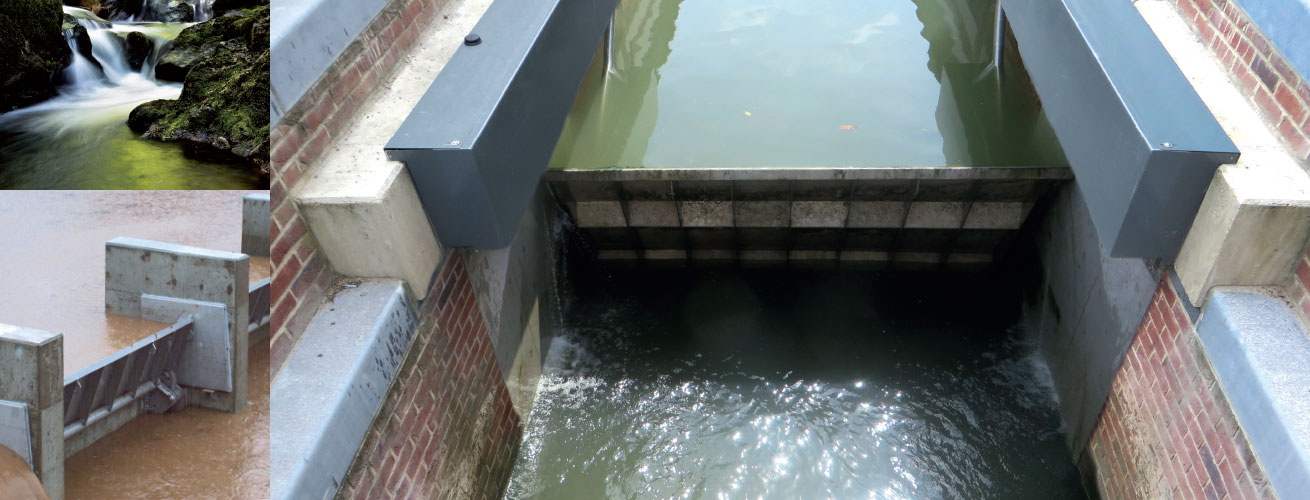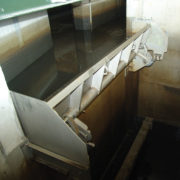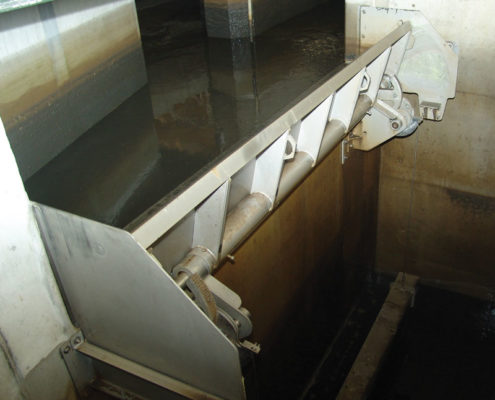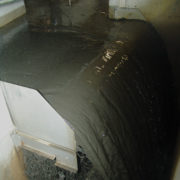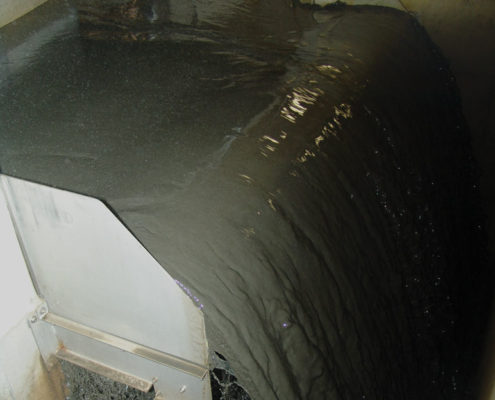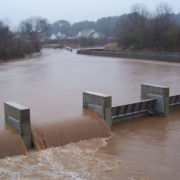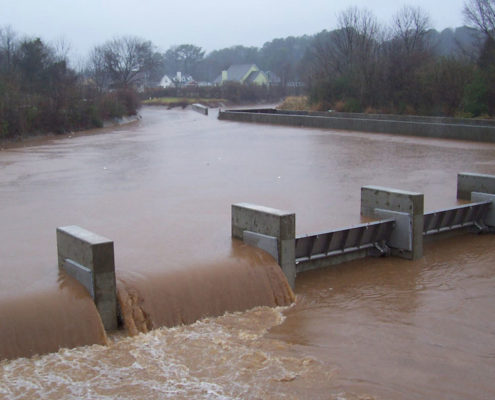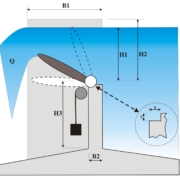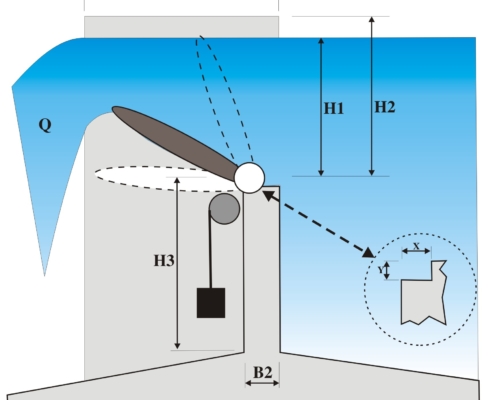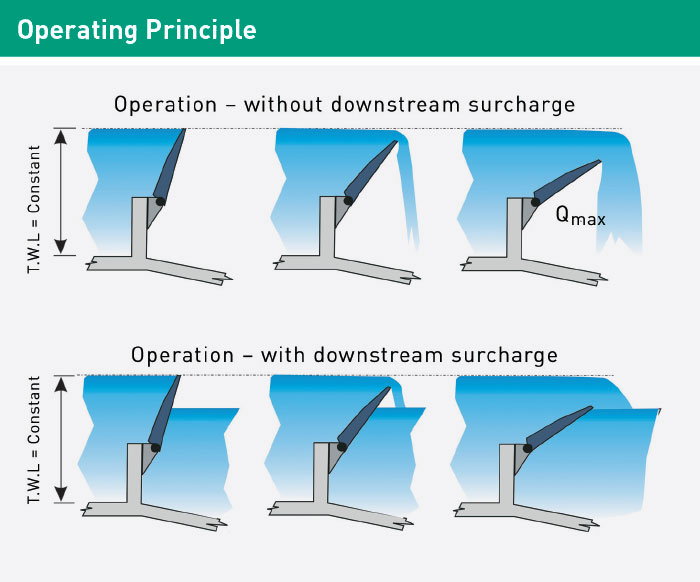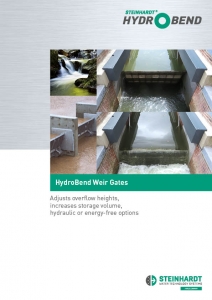Adjusts overflow heights, increases storage volume, hydraulic or external energy-free
The Challenge
Storm retention tanks and sewer networks have to be equipped with spill overflows. In the event of heavy rainfall and if the tank is full, the overflows divert excess water into the adjacent watercourse etc. The upper edge of the overflow weir is the maximum storage of the tank. The area above the overflow weir is used by the water overflowing, the height of which increases as flow increases due to headloss. The Steinhardt HydroBend Weir Gates, when fitted on the overflow weir, allow this overflow height to be utilised and retained increasing the volume of the tank.
The Way
The HydroBend variable weir is normally set in its upright position and will hold back water until an overflow occurs. As the flow rate of the overflow increases, the weir will start to collapse; this action maintains the top water level of the upstream water. The installation of the HydroBend Weir Gate on the overflow weir increases the water level by the value of the headloss due to flow rate. The HydroBend Weir Gate collapses as the overflow occurs, maintaining the normal top water level. When the overflow stops the HydroBend Weir Gate returns to its upright position and retains its height in additional storage.
The Solution
HydroBend Weir Gates are mounted on the spillway / overflow weir and they are hinged at the bottom. If the water level exceeds the weir height, the weir lowers maintaining a constant top water level. The water is discharged over the upper edge of the gate. As the overflow rate subsides the HydroBend returns to its vertical position. In doing so, it retains its height in additional storage within the tank.
HydroBend Weir Gates can be controlled electrically, hydraulically or without a power source using a counter-balance system. The weir gate, operated by adjustable counterweights and cables, is lowered and raised in proportion to the water level/water pressure. In the event of downstream surcharge the HydroBend will still collapse providing there is still a differential water level to permit discharge. Alternatively, the weir gate can be provided as a flood protection valve. In addition to the discharge frequency, the overflow quantity can also be computed by means of an optional inclinometer. Installation can also take place in open channels leading to the treatment plant. We would be pleased to provide further information.
The Advantages
- activates storage volume
- keeps water level constant
- reduces discharge frequency
- protects bodies of water
- no external energy required
- modular structure
- reliable operation
- retrofittable
- low-maintenance
- robust stainless-steel construction
- optional backpressure compensation
- optional backpressure safeguard
- optional remote effect, angular measurement

